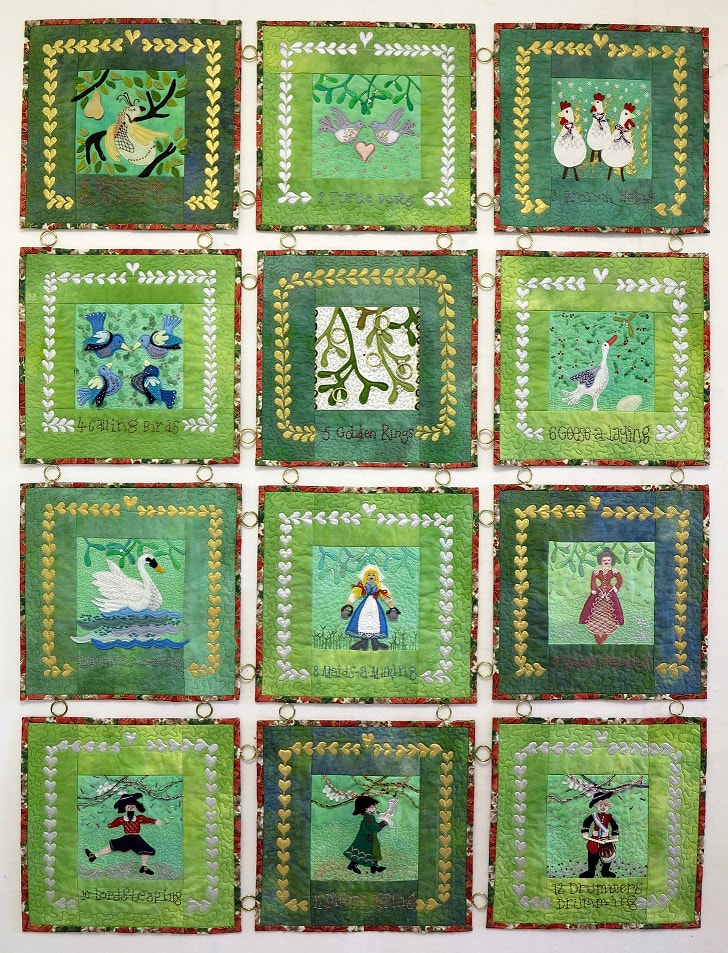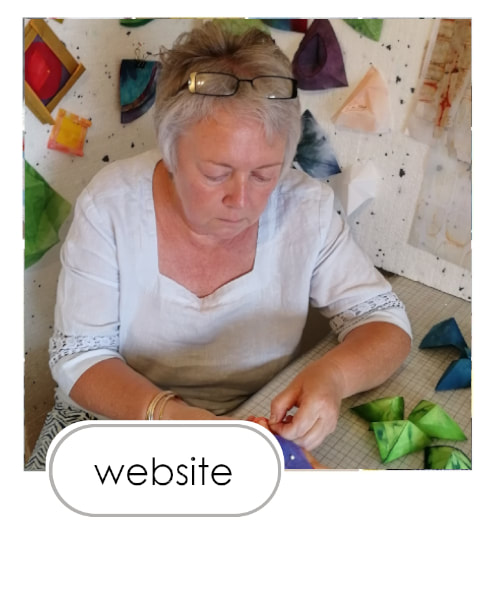|
As you may have noticed, many of the quilts I make can be about subjects that are a bit intense. The subjects are always important to me and I research them carefully before I start work, but it can be a bit depressing. So to lighten the mood it is nice to mix things up a bit and make something fun and lighthearted too.
Each year I make one or more small quilts for the Midsomer Quilting 12 x 12 challenge. You can read more about it here. Their challenge is open to anyone with some sort of link to the shop and an exhibition of the quilts submitted happens at the shop in Chilcompton, UK, in December. It gets better and better each year and many of the quilts are available to buy in a secret auction, the proceedes of which are given to a local hospice known as Dorothy House. The theme this year is 'Think of a number'. After a bit of thought I have decided to go big this time and have designed 12 quilts as my contributuion. My mum also gets involved each year and in support of the 'plan' she is making 12 quilts too, putting her personal twist on the designs, but she is making them all by hand! 12 quilts....have you figured it out yet? Of course, The 12 days of Christmas. As I chatted with my mum about it we both thought the designs could make a great project for a group, a family or just one person to work on over the course of a year and end up being a lovely addition to the Christmas decorations. And thus the idea of a block of the month project was born. Whilst I was up at Midsomer Quilting this past weekend teaching the second part of the Starry Night workshop I spoke to De, Chris, Birgitta and a few of the customers to see what they thought. The upshot is - it is on! ******************************UPDATED BLOG POST FROM HERE:********************************** This is what it looks like! It will work like this: Starting in January 2019 the pattern, fabrics, embroidery threads and full instructions for one 12 inch quilt block will be sent by post to all participants. 27 days later you will receive the next instalment, so by the end of November 2019 you should have a completed wall-hanging / quilt/ set of 12 inch squares ready to decorate your home for Christmas. (There is no need to visit the shop to be part of the Block of the Month, making it great for those, like me, who live far away!) The nice thing about the designs is that the blocks can be made using a variety of different techniques so is suitable for all levels - from beginner to experienced. To try and make things a little more interesting I have set up a closed 'secret' Facebook group for participants where we can share our progress, ask questions and generally have a natter about the project as it develops. Of course, if you are not a Facebook person then there is no need to worry about this - it is just an 'extra'. I also hope to be able to make some short videos showing some of the different techniques used - so watch this space for that (I need to learn how to do it first - but January is ages away!!) Finally, I am also offering a half day workshop for anyone who would like to learn how to hand dye the fabric you use for the project on JANUARY 12th 2019. The cost is £20 and needs to be booked with De at Midsomer Quilting. There are still a few spaces left for the afternoon session if you wish to join in. If you wish to join the fun or are interested in finding out more, then please get in touch with De at Midsommer Quilting (details below). COSTS: £10.50 per month for 12 months for UK addresses £11.75 per month for 12 months for EU addresses £15.00 per month for 12 months for the Rest of the World Payment can be made by cash, cheque or PAYPAL. CONTACT Midsomer Quilting, The Hayloft, Manor Farm, Church Lane, Chilcompton, BA34HP
Thanks for reading.
|
|






